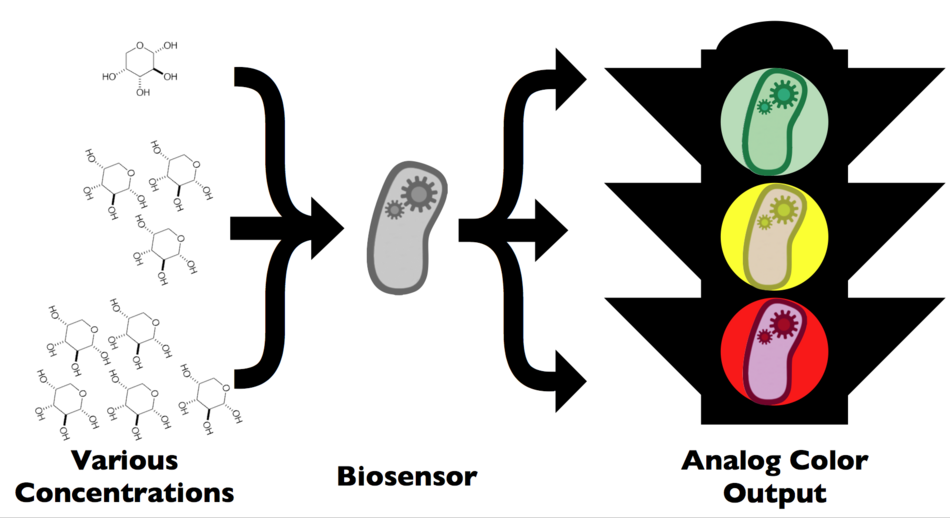Team:British Columbia
From 2009.igem.org
(Difference between revisions)
(→The Bacterial Traffic Light: A flexible, modular, and transparent system for multi-level assessment of variable inputs.') |
(→The Bacterial Traffic Light: A flexible, modular, and transparent system for multi-level assessment of variable inputs.') |
||
| Line 36: | Line 36: | ||
</html> | </html> | ||
| - | |||
| - | |||
| - | |||
| - | |||
| - | |||
| - | |||
Revision as of 02:50, 22 October 2009
The Bacterial Traffic Light:
A flexible, modular, and transparent system for multi-level assessment of variable inputs.'
Biosensors have a diverse variety of real-world functions, ranging from measuring blood glucose levels in diabetes patients to assessing environmental contamination of trace toxins. The majority of these sensors are highly specific for a single input, and their outputs often require specialized equipment such as surface plasmon resonance chips. Our project aims to create a biosensor that recognizes a specific target and alters its output fluorescence from green, to yellow, to red as a function of concentration up to critical levels (hence, a biological "traffic light").
Click the colours of the traffic light to learn about its different subparts!

The Traffic Light is composed of three distinct subparts:
- The pBAD promoter family
- The lock and key riboregulation system
- The Jammer.
 "
"